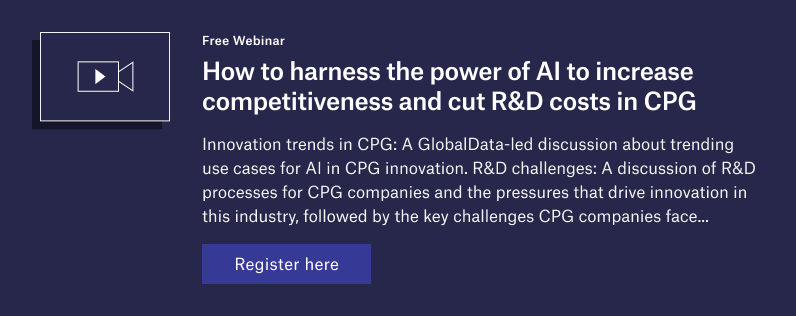
Developing a new drug is a monumental achievement — the reward of years of research and innovation. Successful innovation requires enormous effort from countless project teams that build on the medical, scientific and technological research and development of generations before them. AI in pharma R&D is one of the latest innovations helping teams apply existing knowledge to new problems.
Artificial intelligence (AI) has many implications for pharmaceutical companies, including on research, drug discovery and development, manufacturing and trials. Even AI’s limitations hint at its potential as the technology continues to improve and expand its reach.

Learn about how AI is helping companies right now, what to know about its benefits and challenges, and what’s needed to implement AI in biopharma research.
How is AI used in the pharmaceutical industry?
The power of modern AI can help organizations find solutions faster, optimize their operations and enable innovation. AI can help teams collaborate and share knowledge to empower better-informed decisions.
The potential uses for AI in the pharmaceutical industry are limited only by imagination and the outer edges of technology. AI and its healthcare applications will continue to evolve, but you can already realize many potential benefits. Here are a few ways AI is used in pharma today.
Product management
AI in product management can improve every phase of a product, from ideation to development to commercialization. AI helps unlock meaningful questions in the exploration phase, improves predictive models using sophisticated data science techniques and can even inform product marketing.
Research and development
R&D teams can use AI to access a broader range of databases without requiring manual oversight or updates. This helps your teams analyze more data in less time and cost, which can inform R&D efforts with fewer false starts. AI’s ability to inform R&D also adds flexibility and agility to your processes, as teams can quickly adapt to market changes or what the data reveals.
Drug discovery
Predictive models based on AI-driven insights can contribute to discoveries. For example, MIT researchers have used AI to discover new antibiotics. They created neural networks that found multiple antibiotics from millions of candidates. Findings such as this are made possible with the support of AI’s cost-effective analysis of vast amounts of data.
Clinical trial monitoring
Completing clinical studies more quickly can mean critical medicines and treatments reach patients faster. Companies that combine rapid innovation with speedy but safe trials can gain a multifaceted competitive advantage. According to Deloitte, 76% of biopharma companies invest in AI for clinical development.
Manufacturing
Manufacturing is increasingly becoming digitized or automated, particularly in inspection and quality control. AI can help here by helping manufacturers determine optimal operating conditions based on historical and real-time production data. AI can contribute to predictive maintenance and quality control practices that solve production problems by preventing them from occurring at all.
What are the potential benefits of using AI in pharma R&D?
Bringing a new medicine to market can cost millions or even billions of dollars over years of research and trials. AI, machine learning and other technologies can contribute to each stage by streamlining processes, saving time and money and enabling cutting–edge products. Here are a few of the ways AI can improve existing pharma R&D.
Redefining longstanding workflows
Today, the most significant value of AI is increased efficiency, accuracy and effectiveness. Pharma R&D projects must practice effective time management and decision-making to meet market demands and tight deadlines. AI can redefine and enhance workflows in two key ways: replacing manual, low-level cognitive tasks and giving statistical insights into what’s working and what could be improved.
Eliminating knowledge silos
Knowledge silos are created when a person or group in your organization has information or skills that aren’t being shared across the enterprise. This might be intentional, such as when employees hoard knowledge because of self-interest or fear. However, silos are also an unintentional byproduct of job specialization and isolated teams. Colleagues with similar responsibilities and experience often work on the same team and may have limited communication with the rest of your organization.
To break down these silos, you need knowledge-sharing and communication tools that leverage the power of AI and make information easy to find and access. These solutions give teams greater access to all resources available, including subject matter experts from throughout the enterprise.
Lower costs
Faster R&D means lower operating costs for your projects, but that’s not the only way AI can help you reduce costs. AI can help companies identify inefficiencies, reduce redundancies and optimize processes, reducing waste in each case. According to a report from Insider Intelligence, AI could curb drug-discovery costs for companies by as much as 70%.
AI as a tool to break down silos
Providing your teams with resources such as a knowledge base and effective communications tools is important. But that’s not all there is to modern knowledge management. While you want to empower employees to self-resolve their queries and problems, sometimes they need additional information.
An effective modern knowledge management strategy also creates access to experienced employees from throughout your enterprise who can share their tacit knowledge to help answer questions and find solutions. By using AI to supplement knowledge sharing, you create a network of knowledge and expertise. This provides your teams with access to accurate, up-to-date information at any time. Having AI connect people with these subject matter experts also prevents these employees from becoming overwhelmed with duplicative requests. Likewise, a knowledge management system can ensure that all your in-house experts are able to contribute their knowledge, rather than the same few experts being inundated by requests simply because they’re well-known inside the organization.
Starmind, for example, uses proprietary AI to help connect people at the right time by more effectively using the data you already have. As your team creates millions of data points every day, Starmind’s AI analyzes them and uses the results to build a real-time network of your organization’s knowledge. When an employee has a question, it’s automatically routed to the people with the exact knowledge they need, regardless of their title, department or location. This means your team is provided with high-quality answers and information at a fast pace.
What’s needed to successfully implement AI in pharma research?
Implementing AI successfully can be a long process that requires ongoing refinement. Here are three key actions for incorporating AI into your pharma research.
Develop a road map for action
Begin by considering your strategic goals and how AI can help you achieve them. Review your workflows, data and teams to identify problems or opportunities that AI can address or improve. This can prioritize your most important needs and how you’ll solve them.
Create a clear strategic vision
Your goals for AI should align with your R&D team’s overall goals and the organization’s big-picture strategy. AI-based projects should not focus on strategically disconnected use cases or act as solutions in search of problems.
Prepare for resistance to change
Any new initiative meets active and passive resistance. Communicate your current challenges, how AI will help solve those and how you’ll validate AI’s results. Emphasize how your people remain essential to the work, lest employees believe that AI is there to replace them. Start small with a pilot program, if needed. Getting early positive results can highlight the benefits of AI, win over skeptics and create internal ambassadors for further use.
Modern knowledge management complements AI
AI has almost unlimited potential for pharma companies. From optimizing workflows to analyzing large amounts of data and creating predictive models, AI contributes to better results while creating efficient, cost-effective processes. The time and costs associated with drug discovery and development are two of the industry’s biggest challenges, and AI can address both.
As you consider how to implement or improve your use of AI, review your knowledge management strategy. Knowledge management should align with AI efforts, as they both require reliable data and seek to inform people more quickly. Modern knowledge management expands beyond documented knowledge by connecting people with subject matter experts who can fill gaps in knowledge in real time. Teams with access to a real-time knowledge network and the power of AI in pharma R&D are well on their way to successful innovation.


